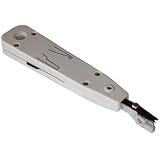Hi folks
I'm new here and this Q may have been asked somewhere along the lines in the forum but ,here goes,
I was wondering what the best cable is to extend a BT drop wire? I know its a tad on the naughty side but I'll risk it for a biscuit, What it is ,is that my drop wire/cable (Black) comes up from the ground inside a pantry inside of the house and I'm after taking the pantry wall down so i was hoping to move the Master socket closer to the router in the living room( about 15-18 mts)tops, At the moment i think it has been cut at sometime as there are 2 jelly crimps about 6 inch from the cable and there's probably only 8 inch out of the floor so i was hoping maybe i could get two more jelly crimps and run Cat5/6 cable to a repositioned Maser socket and also will it improve my broadband speed?
Pleas try and tell me in layman's terms as some of the terminology gets a slight confusing lol
Thank
Rick
I'm new here and this Q may have been asked somewhere along the lines in the forum but ,here goes,
I was wondering what the best cable is to extend a BT drop wire? I know its a tad on the naughty side but I'll risk it for a biscuit, What it is ,is that my drop wire/cable (Black) comes up from the ground inside a pantry inside of the house and I'm after taking the pantry wall down so i was hoping to move the Master socket closer to the router in the living room( about 15-18 mts)tops, At the moment i think it has been cut at sometime as there are 2 jelly crimps about 6 inch from the cable and there's probably only 8 inch out of the floor so i was hoping maybe i could get two more jelly crimps and run Cat5/6 cable to a repositioned Maser socket and also will it improve my broadband speed?
Pleas try and tell me in layman's terms as some of the terminology gets a slight confusing lol
Thank
Rick


